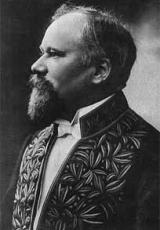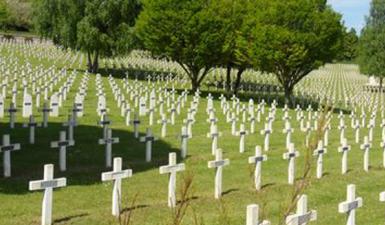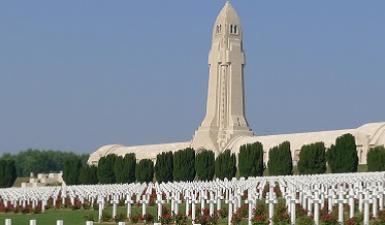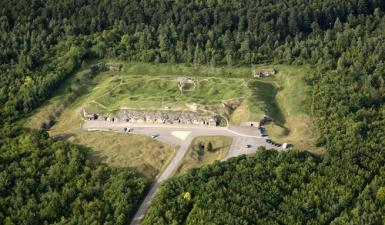Verdun 1916-2016
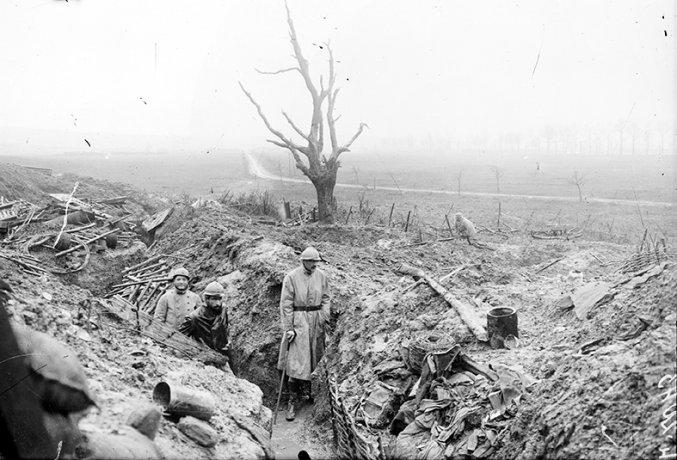
Contents
21 février : offensive allemande sur Verdun.
25 février : prise du fort de Douaumont par les Allemands.
26 février : Pétain commandant de la région fortifiée de Verdun . prise de la côte du Poivre.
2 mars : de Gaulle prisonnier des Allemands près de Douaumont.
4 mars : prise du village de Douaumont par les Allemands.
5 mars : bombardement allemand sur la rive gauche de la Meuse.
6 mars : attaque allemande sur la rive gauche de la Meuse.
7 mars : progression allemande.
14 mars : Joffre en visite sur le front.
16 mars : attaques concentrées allemandes autour du fort de Vaux.
20 mars : prise du bois d?Avocourt-Malancourt par les Allemands.
22 mars : prise du mamelon d?Haucourt par les Allemands.
28 mars : prise de commandement du général von Gallwitz.
31 mars : prise de Vaux par les Allemands.
5 avril : prise d?Haucourt par les Allemands.
10 avril : ordre du jour de Pétain : "On les aura".
18 avril : création en Lorraine de l'escadrille La Fayette composée de pilotes américains.
23 avril : semaine de combats sur la rive gauche de la Meuse pour le contrôle de la cote 295 et du Mort-Homme.
1er mai : Pétain nommé commandant du groupe armé du Centre, transmission du commandement de la IIe armée à Nivelle.
23 mai : échec français au fort de Douaumont.
24 mai : prise de Cumières par les Allemands.
1er juin : assaut de Fleury par les Allemands.
7 juin : prise du fort de Vaux par les Allemands.
12 juin : des soldats français ensevelis dans leur tranchée (La tranchée des baïonnettes).
23 juin : échec de l'attaque allemande contre le fort de Souville.
1er juillet : offensive franco-britannique dans la Somme.
11 juillet : offensive allemande sur le fort de Souville.
4 août : reprise du fort de Souville par les Français.
2 septembre : fin de l'offensive allemande.
24 octobre : contre-offensives françaises.
28 octobre : bombardement du fort de Vaux par les troupes françaises.
2-3 novembre : reprise du fort de Vaux par les Français.
15 novembre : dernière contre-offensive française.
18 décembre : fin de la bataille de Verdun.
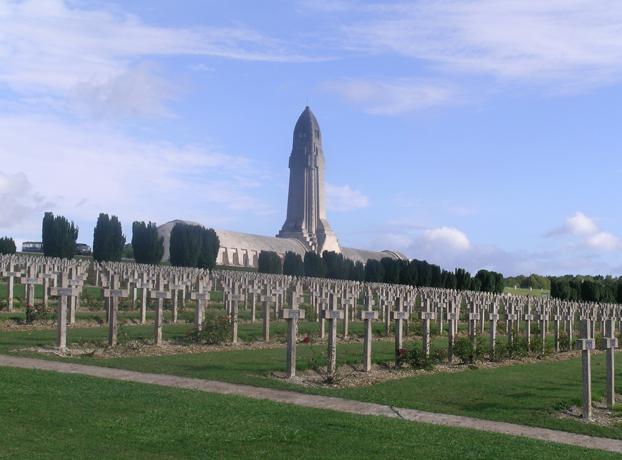
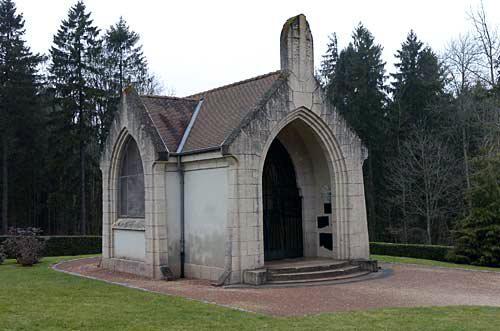
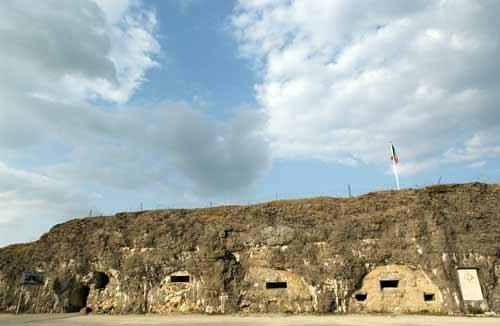
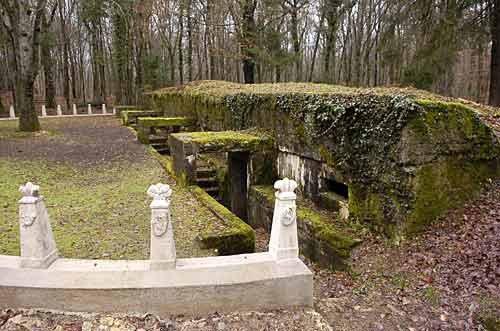
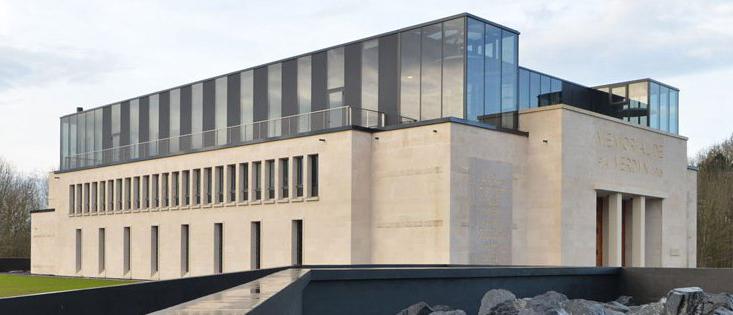
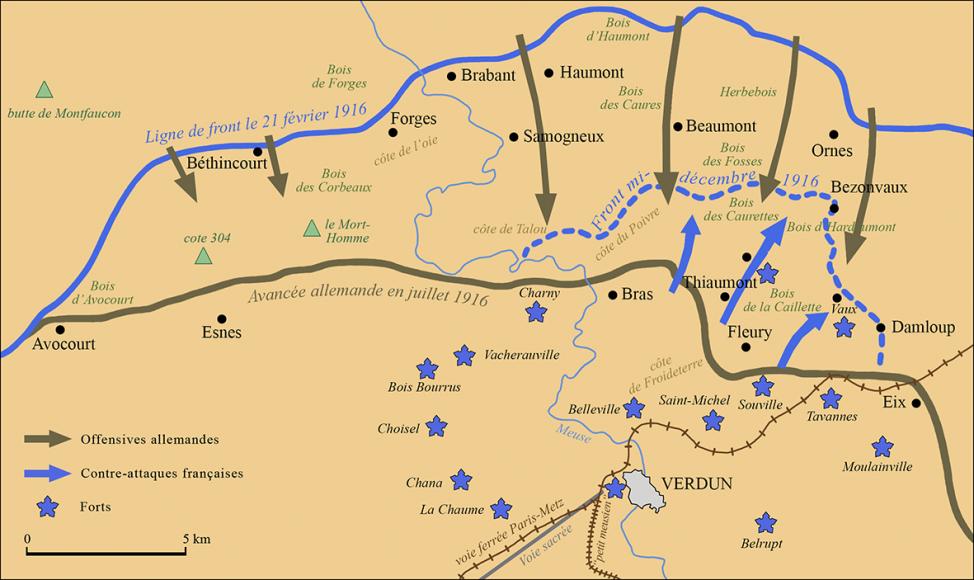
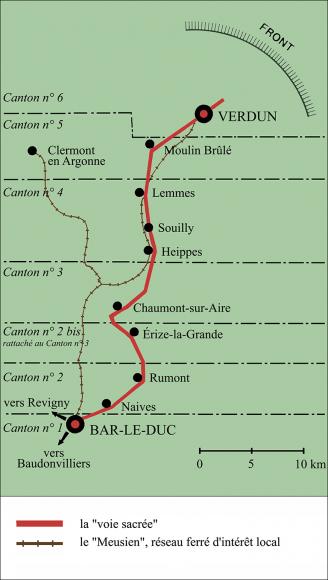
Summary
Date : 10 – 31 August 1944
Place : Paris
Outcome : Liberation of Paris
Forces present : US Army V Corps commanded by General Gerow
French 2nd Armoured Division commanded by Général Leclerc
French Forces of the Interior (FFI)
German garrison commanded by General von Choltitz
The Battle of Verdun is the epitome of the 1914-1918 war for the French in all its intensity and horror, but it also became "The" battle, a symbol of resistance and victory with Verdun then becoming the venue for Franco-German reconciliation. Antoine Prost and Gerd Krumeich compare their analyses here to question The memory of Verdun on both sides of the Rhine.
IN WHAT CONDITIONS DID THE BATTLE START?
Antoine Prost: At the end of 1915, the war seemed to be stuck in a rut. The Allies had failed to break through and their failures at Artois and Champagne persuaded Falkenhayn, the German commander in Chief, that a breakthrough was impossible. But he wanted to get back to a war of movement. He held the British army in great esteem but believed the French army was exhausted. How could these people who do not have children continue the war? Hence the idea of inflicting a major defeat on them in an area where the British could not help them. He believed this would lead them to seek a separate peace. A political miscalculation due to his underestimating his opponents. But why attack Verdun?
The President of the Council Georges Clemenceau at Mort-Homme during a visit to the battlefield, September 1917.
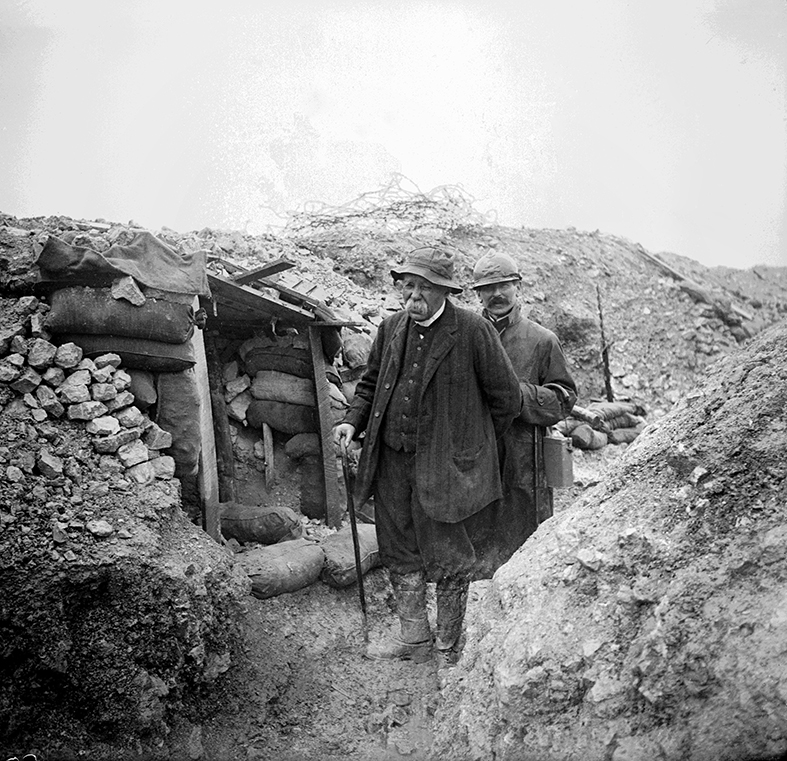
© ECPAD 1917 / Albert Samama- Chikli
Once the battle had gotten bogged down, Falkenhayn claimed he wanted to bleed the French white because the symbolic importance of this site would force them to defend it no matter what. And this was what happened. But in the German headquarters, no one spoke of a blood-letting prior to the battle. Moreover, Verdun was much less important than Reims for the French. In September 1914, the order had even been given to evacuate it. In fact, Falkenhayn's reasons were military. The fortified region of Verdun was a dangerous salient threat along his lines. On the other hand, it was difficult to defend. Firstly, it had very fragile links to the interior: the railroad to Nancy was cut off at Mihiel by the Germans and that of Sainte-Menehould came under their artillery fire. There remained a slow narrow-gauge train and a rocky road that was enlarged in 1915 and which no one could have imagined how intensely it was to have been used by the French. As well as that, the French would have great difficulty fighting on the right bank because the Meuse was a major cut-off point on which there were less than a dozen bridges. So Falkenhayn initially decided to only attack on the right bank and not on both banks as requested by the Chief of Staff of the attacking army.
This choice was also a tactic intended to save his troops. He was counting on his heavy artillery which was much more powerful than that of the French, to crush French positions to such an extent that they would no longer be able to defend them. In fact, the German attack was not a headlong rush forward, the infantry were confident; if they met resistance, the order was to wait for another bombing. This tactic focused all fire on a relatively narrow but deep zone to get the most intense shelling and prevent the arrival of reinforcements.
The offensive was decided on in December and quickly put together: it was ready on 12 February but bad weather put it back to the 21st. Joffre, who believed the major battles would take place on a broad front could not imagine that the Germans would engage massively into this deep ravine terrain and only realised the danger at a very late stage. He was not aware of how dramatically unprepared the Verdun front was and his artillery was quantitatively and qualitatively greatly inferior to that of Falkenhayn. He took the necessary precautions at the last minute. We cannot say that the French were surprised, but they were not prepared. The first week of the battle almost ended in disaster.
Ceremony at the Douaumont ossuary under construction, 1927.
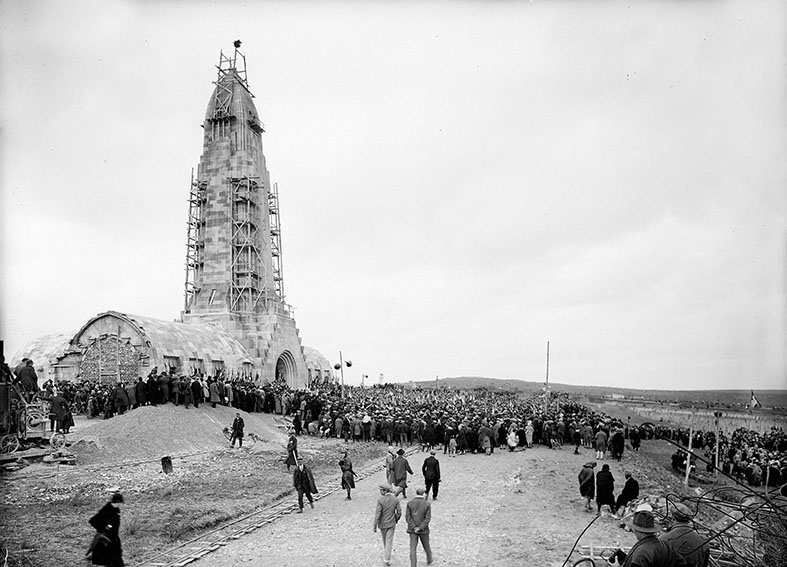
© Suddeutsche Zeitung / Rue des Archives
WHY DID THE BATTLE OF VERDUN BECOME A SYMBOL OF THE FIRST WORLD WAR?
Antoine Prost: Verdun is not a symbol of the First World War everywhere. For the English, the Somme or Passchendaele matter much more. But for the French, yes, it summarises and symbolises the entire war. The fighters were saying it already in 1916: "If you weren't at Verdun you weren't in the war." In fact Verdun and the Armenian genocide is all that lower secondary school pupils are taught about the war.
For the soldiers, this battle was the peak of violence: they had never seen such hell. It was worse than that of previous battles. But then they were not in a position to compare Verdun to the battles that followed such as the Somme or Le Chemin des Dames. Yet these were probably worse, because the technological war continued to escalate with more massive bombings and ever more machine guns. Witnesses everywhere tell of the same horrors: the thirst, mud, the stench, exhaustion, the distress of shells falling all round, the cries of the wounded, the dislocated corpses, death present everywhere. There are no scales to measure the horror of battle and this one resulted in 143,000 German deaths and 163,000 French deaths but the monthly toll in the Somme was higher than that of Verdun.
Other reasons have been put forward to explain the exceptional status of Verdun: the fact that this was the only battle in the war in which the Allies did not play a direct role, or the "noria" that moved 73 of the 100 divisions in the French army to Verdun, with the result being that, of all the battles in the war, it was the one in which the largest number of French soldiers took part. Yet these explanations are secondary.
In fact, at the time, Verdun was experienced as an exceptional battle, "The" battle that we could not lose. Since 1914, the Allies had had the upper hand. And here now were the Germans attacking. And what an attack! Within days, they had advanced 6 to 8 kilometres, the front was at breaking point, defeat loomed. The French feared losing the war and they knew what that meant: they had lost the previous one and it had cost them Alsace and Lorraine. It was essential to prevent the Germans from getting through. Anguish was widespread: among politicians, journalists and the population at large. The soldiers understood how important this was and in the decisive moments of the battle, at the end of February or in June, when the German advance came to within 4 km of the city, they fought with unimaginable fury in absolutely abominable conditions. In fact they took legitimate pride in this and as a result we have a considerable volume of accounts of the battle with publishers and the public keen to be informed.
The remains of the unknown soldier leave Verdun for the 11 November 1920 ceremonies in Paris.
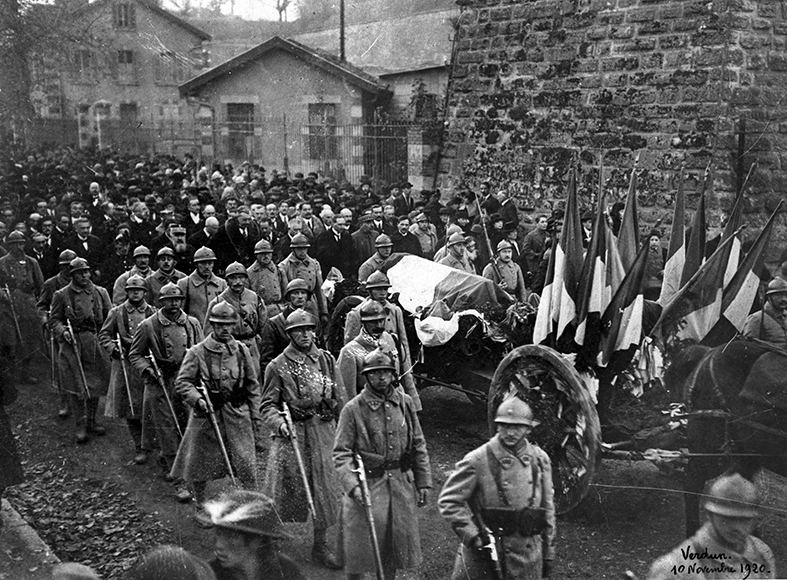
© Neurdein / Roger-Viollet
HOW DO YOU EXPLAIN THE SPECIAL PLACE VERDUN HAS IN THE FRENCH IMAGINATION?
Antoine Prost: I have already answered in part, but we must be more precise. The myth of Verdun is focused on the right bank of the Meuse: between the city and Douaumont ossuary. The left bank was of much less importance, to such an extent that the French claimed victory in December 1916 after taking back the two forts of Douaumont and Vaux but not Hill 304 or the Mort-Homme which had been the subject of fighting that was just as fierce and that the Germans still held. This dissymmetry can be explained by the choice made on 25 February by the military and politicians to defend Verdun on the right bank. It was playing tough because militarily it would have been possible to retreat behind the Meuse. This possibility had in fact been discussed several times. But this decision gave the right bank exceptional symbolic value.
Ceremony at the Douaumont ossuary with the arrival of the coffins of 52 unidentified soldiers, 1927.
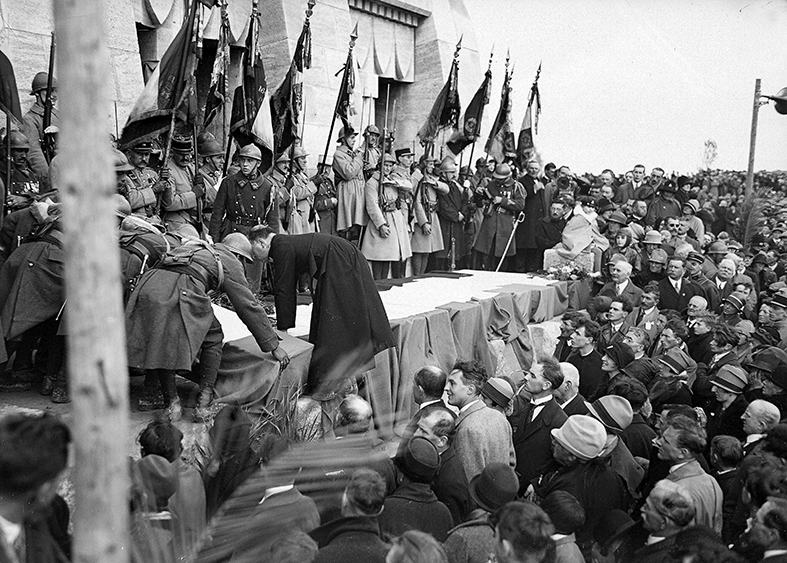
© Albert Harlingue / Roger-Viollet
In 1916, everybody who was anybody, ministers, parliamentarians, journalists, academics, artists, everyone wanted to go to Verdun and to say they had been there. Poincaré went there six times. In September, he decorated the city with the Legion of Honour and the Croix de Guerre and the town also received a dozen foreign decorations. In November, the City created a medal for Those of Verdun. In 1920, it was from the citadel of Verdun that one of the eight coffins of unknown soldiers was chosen to be buried under the Arc de Triomphe. Cities named streets after Verdun. Numerous players contributed to making the battlefield a sanctuary where normal life was at a standstill. It was the building of the ossuary by a Committee that collected fourteen million in donations pending a grant from the State that enabled it to be completed in 1932. It was the grouping of twenty-two small cemeteries into one big one of 16,000 graves in front of the ossuary. The pilgrimages by veterans, tourism and commemorations rounded off this work. In July 1936, 30,000 veterans from ten countries, mostly French, Italians and Germans came to Douaumont to take an oath to defend peace. Between 1962 and 1967, the National Verdun Remembrance Committee built a memorial beside the destroyed village of Fleury to perpetuate the memory of the soldiers when the witnesses will have all disappeared.
But the context is changing. Because Douaumont was an epicentre of national pride, but a peaceful pride: that of a France that does not attack, but that can defend itself, this was the ideal place to seal the reconciliation between the two peoples, two peoples who had fought so hard against each other. A reconciliation marked by a silent yet powerful gesture, that of François Mitterrand and Helmut Kohl holding hands.
WHAT PLACE DOES THE BATTLE OF VERDUN OCCUPY IN THE EUROPEAN CONSCIENCE?
Gerd Krumeich: What has been said about the "uniqueness" of this battle is also of great importance in the European memory.
The First World War had tremendous consequences for Europe; it definitely lost its global pre-eminence. and the Battle of Verdun was of such a nature that it will forever be the symbol of the Great War. If fact it had this status right from the time of the battle, when "Verdun" was made into this shrine by the French political and military establishment, a place where "you shall not pass", a place visited not only by the President of the French Republic, Raymond Poincaré but by numerous representatives of allied and neutral states who came to visit the city and who decorated it many times in numerous different forms.
50th anniversary of the battle of Verdun: General of Gaulle and Pierre Messmer, Minister of Defence at Douaumont ossuary, 29 May 1966.
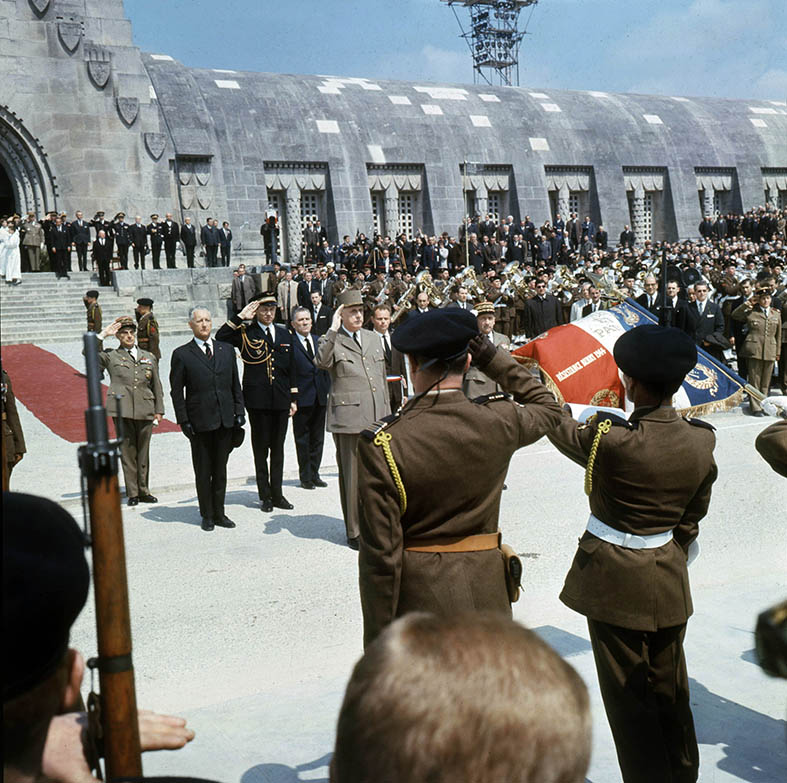
© Rue des Archives / AGIP
After the war, everyone knew that Verdun was the impassable location of massacre and horror; to those who might be considering the possibility of war, it demonstrated the futility of any war. Verdun became a sort of European peace capital. And this all the more since the French memory of Verdun was not a triumphalist one of victory, but rather a delicate mix of pride in what had been accomplished and deep mourning for the dead, whose horrible fate was beyond commemoration...
So the memory of the Battle of Verdun quickly became the memory of the great sacrifice that had been asked of so many soldiers - soldiers from two neighbouring peoples who had been enemies for centuries. It was acknowledged in both countries, who have now formed the nucleus of the new Europe taking shape, that Verdun was only the triumph of death. And this is also the reason why we started to commemorate this battle together, French "poilus" and German feldgrau side by side. And this was the case as early as the end of the twenties when meetings between veteran organisations were organised. This movement towards a common memory came to an insurmountable peak on 12 and 13 July 1936 when over thirty thousand veterans from ten countries, mainly French, Germans and Italians met in the Douaumont cemetery opposite the ossuary and pronounced an "oath" of peace, as follows:
"Because those who rest here and elsewhere have gone to the peace of the dead only to establish the peace of the living...
And because it would be sacrilege for us to allow what the dead abhor,
we swear to safeguard and to will the peace which we owe to their sacrifices."
This was the first step towards a final reconciliation, but it had no significant effect at the time since the Germans wanted revenge before peace could be made. But once the "interlude" of the Second World War was over, Verdun could ultimately resurface as an emblematic place of reconciliation and confirm the city's function as a symbol of peace that it had taken on in the twenties and thirties.
Today in the European consciousness, "Verdun" is still the emblem of war so "absolute" it ultimately crushed any desire for war.
WHAT PLACE DOES VERDUN HAVE IN THE GERMAN MEMORY?
Gerd Krumeich: Today, the Germans are not very aware of the fact that Verdun is of concern to them as an integral part of their history. For most of our contemporaries it is a distant battle as remote as Sedan or Leipzig. This follows from the fact that as a whole the Great War is in no way as important to Germany as it is to the French or British. The memory of the Great War was "swallowed up" by that of an even greater war, that of 1939-1945, when Germany was devastated and where its crushing responsibility continues to concern us right down to the present day. If Verdun is present in the German memory it is more in the form of the war history rather than German history. There are no more grieving associations. We do not personally make any difference between a grandfather or great-grandfather who fell at Verdun or the Somme or on the eastern front. All that is so far away...
And this is all the truer, of course, since Verdun was not only a lost battle but it is also marred by a deep feeling of complete absurdity.
François Mitterrand and Helmut Kohl at Douaumont ossuary 22 September 1984.
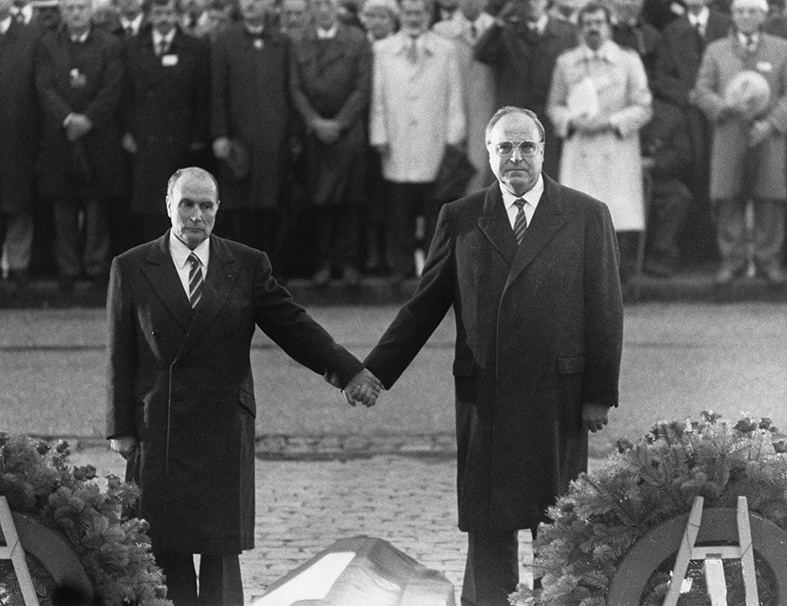
© Picture Alliance / Rue des Archives
This is the effect of the so-called "Christmas Memorandum" from Chief of Staff Erich von Falkenhayn, who claimed he did not want to take Verdun, but saw it as a suitable place to "bleed the French white". Yet it is now established that this Memorandum is most likely a fake, produced after the war to explain away the failure. Nevertheless, the feldgrau at Verdun and then the public as a whole were deeply shocked in 1920 to discover this version of the battle: the Germans knew only too well that their army had been "bled out" at Verdun just as much as had their enemy. A useless battle therefore, and Falkenhayn's so-called plan was seen to be a kind of stab in the backs for his soldiers: they had sacrificed themselves at Verdun with the aim of taking Verdun and by this victory put an end to a war that nobody wanted any more and now they were being told that the only purpose was to bleed out the French. An that's why they themselves had been bled out! A useless sacrifice therefore and which took away any "sacred" aspect the memory of Verdun might have had.
WHAT WAS SO SPECIAL ABOUT THIS BATTLE?
Gerd Krumeich: There are several peculiar features about the battle of Verdun. This is why it remains one of the great battles not only in The Great War but in world history.
This is firstly due to the lasting nature of this battle. The battlefield was relatively small (between 30 and 40 km2) and a hundred years later, the site remains ravaged by the war. A landscape where the shell holes - slightly levelled - still give the land a dune appearance in which the vegetation has finally won out but with great difficulty. In such a way that we always easily imagine what it was like at the time. There are also the huge forts, all places and names that recreate the horror of the time: Douaumont fort, Vaux fort, Tavannes tunnel, Mort-Homme etc. And overshadowing the site is the Douaumont ossuary, this impressive building, where one can peek through small basement windows to see the huge pile of bones kept there. About 135,000 French and German soldiers whose name nobody knows. "All that" was scattered all over the battlefield and buried in the earth, then collected in the 1920s and later. All this brings home the carnage of Verdun to all and for all time, a formidable - even unspeakable - 10 months of carnage. Close combat, a real archaic "corps à corps" which had the particularity of being accompanied by the pounding of shells of all calibres from huge guns located some 10 km away. This form of combat was unique; it was like a transition to the truly industrialised warfare that would later bring death at a distance across an "empty" battlefield as in the Somme and Flanders But Verdun remains unique: there was no other battle that combined archaic warfare in which soldiers literally strangled each other and industrial death from afar.
Commemorating "Verdun" therefore means commemorating the Great War as a whole, on a site where death is still present, whose landscape is dominated by military cemeteries where some two hundred thousand young French and German soldiers rest not to mention those in the ossuary. French and Germans - since the battle only opposed these belligerents and this too is a unique case in the entire Great War. Commemorating the battle of Verdun is therefore important on several levels and for several reasons: Verdun is the symbol of the war in all its forms and its devastations. Verdun is also a key site in the huge conflict one hundred years ago between France and Germany, a conflict that was so absolute that it could only lead to definitive peace between both nations. Peace and agreement perfectly symbolised by François Mitterrand and Helmut Kohl hand in hand on 22 September 1984. An agreement that is the basis of a peaceful Europe in which no one ever thinks of a war of conquest.
Author
Antoine Prost - Emeritus Professor of contemporary history at the University of Paris 1-Panthéon-Sorbonne/Gerd Krumeich - Emeritus professor at the Heinrich-Heine University of Dusseldorf and associate professor at the Institut d’histoire du Temps Présent
Read more
Bibliography
Verdun 1916, Antoine Prost and Gerd Krumeich, Tallandier, 2015.
Online articles
1916 or the breakthrough year for the use of air weaponry, Louis Chagnon, RHA 242/2006
Verdun 1916 : a strategic choice, a logistics equation, Allain Bernède, RHA 242/2006
La gendarmerie in the battle of Verdun (February - October 1916), Louis Panel, RHA 242/2006
Galeries photos
Views of the fortified region of Verdun and the Saint-Mihiel salient in January 1916
Fort Douaumont and surroundings after the offensive of 15 December 1916
The camp for German prisoners in Souilly in La Meuse
The little trains of the Great War
Mourning and memories of the Great War
Video
Articles of the review
-
The event
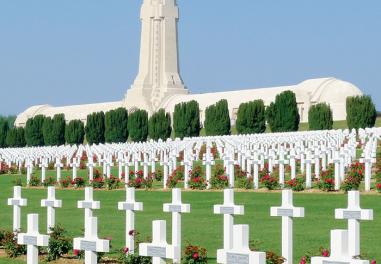
Verdun, a site of Franco-German remembrance
Read more -
The figure
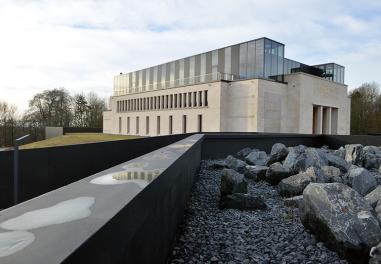
The Verdun Memorial
Created in 1967, the Verdun Memorial is a key historical and remembrance site set in the heart of the battlefield.
After a complete overhaul and extension, the Memorial reopened on 21 February, the anniversary of the first day of the battle of Verdun.
Read more -
The interview
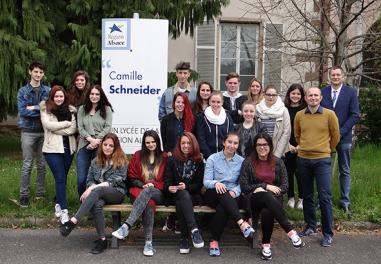
Some pupils at Verdun
After studying the work of Maurice Genevoix, final year secondary school pupils from the Camille Schneider vocational lycée in Molsheim visited Verdun and the Éparges site where the author of Ceux de 14 (The Men of 1014) fought.
Confrontation with the living memory of the site.
Read more



